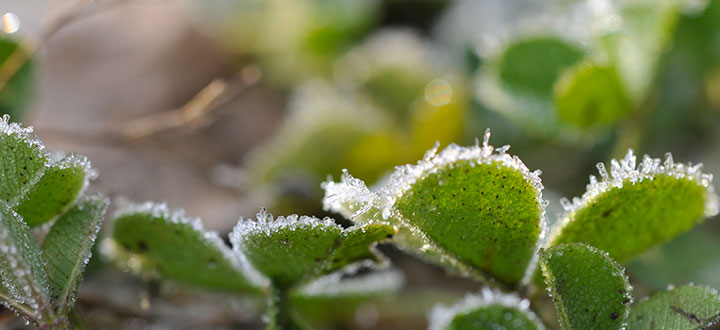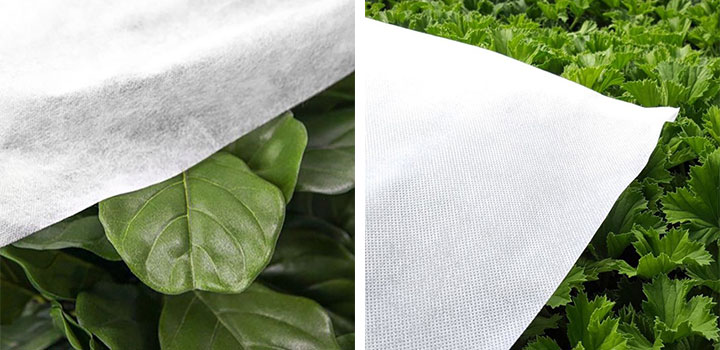Helping plants cope with winter
Cold conditions take their toll on plants during winter. In recent years, winters have become more extreme with frost, very low temperatures and even snow occurring over a wider area than ever before. While some winters are mild, gardeners should be prepared for damaging winter conditions between autumn and early spring.
The good news is that many of our favourite winter plants such as pansies, violas and winter edibles are not damaged by cold or frost. Roses and other winter-dormant plants such as fruit trees are protected from cold damage while dormant.

Frost is almost inevitable in the winter garden - but not all plants are affected in the same way.
Susceptible plants
New growth on evergreen and deciduous plants is more vulnerable to cold damage than mature growth. Avoid stimulating new growth in frost-prone regions by delaying pruning and fertilising until spring. Don’t prune off frost or cold damage until after winter, either - the damaged leaves will provide cover to shelter the tender new growth underneath.
Avoid selecting early flowering varieties of deciduous plants as these may bloom or shoot when conditions are cold. Also, delay planting cold-sensitive annuals and vegetables such as petunias and tomatoes until the cold has well and truly passed.
Cold winds
As well as bringing cold temperatures, winter may bring strong and damaging cold winds. These may harm tropical and subtropical plants including citrus, damaging foliage and causing bud or fruit drop. Wind may also dislodge plants from the soil. Ensure that vulnerable plants are sheltered from winter winds to reduce damage. Plant them in a position where they're not exposed, such as along the sheltered side of a house. If this isn't possible, you can use temporary screens or plant shelterbelts such as evergreen hedges. Stake any plants that are vulnerable to being buffeted by wind.

Frost blankets are available from selected Flower Power Garden Centres in cold-prone areas.
Frost
Frost is often experienced in winter, particularly away from the coast. It occurs when ground temperatures drop. Water freezes and appears as an icy covering over the ground, surfaces and foliage. Frosts can be experienced between autumn and spring and can harm plants.
Conditions that herald frost include overnight temperatures at two degrees Celsius or less, clear skies and still air. Begin planning for frost well ahead of the arrival of the first frosty morning.
Plants respond differently to frost – some take it in their stride, some avoid it by becoming dormant during winter, and others are damaged or even killed. Even one frost can cause damage. Frost damage often appears as burning on the leaves, shoots and stems of susceptible plants. Most plants recover from mild frost damage, but severe damage can kill.
Gardeners who live in frost-prone areas need to protect sensitive plants from damage. Where frosts are common and regular features of winter, grow frost-tolerant plants. Keep plants that are susceptible to frost damage (such as succulents and tropicals) in pots orcontainers and move them into a frost-free part of the garden when frost is likely. A verandah, a conservatory or a heated glasshouse are all suitable options to protect sensitive plants.
Yates Waterwise Drought Shield, available at Flower Power, is a flexible polymer film that’s sprayed over frost-sensitive plants to protect them. Spray several weeks before frost is likely - the effects are said to last up to 90 days. Plants can also be protected with temporary covers such as frost blankets, which are available from Flower Power Garden Centres in areas prone to frost. These covers are placed over vulnerable plants at night and removed after the frost clears in the morning.
Snow
Some regions may experience isolated snowfalls in winter. While snow is rare in Australia except in alpine and southern regions, when it does occur it can cause damage by breaking branches, freezing buds or causing cold damage. Use a broom to dislodge snow that builds up on tree branches to reduce damage.

